On a tabletop in Sophia Dress’s Truro studio are about a half dozen wooden objects carved from walnut wood. It’s not obvious how to categorize them. About the size of platters, they are domestically scaled. In some, abstract shapes rise gently from wooden slabs, appearing almost like modeled clay. In others, the shapes sit below the surface, carved in various patterns.
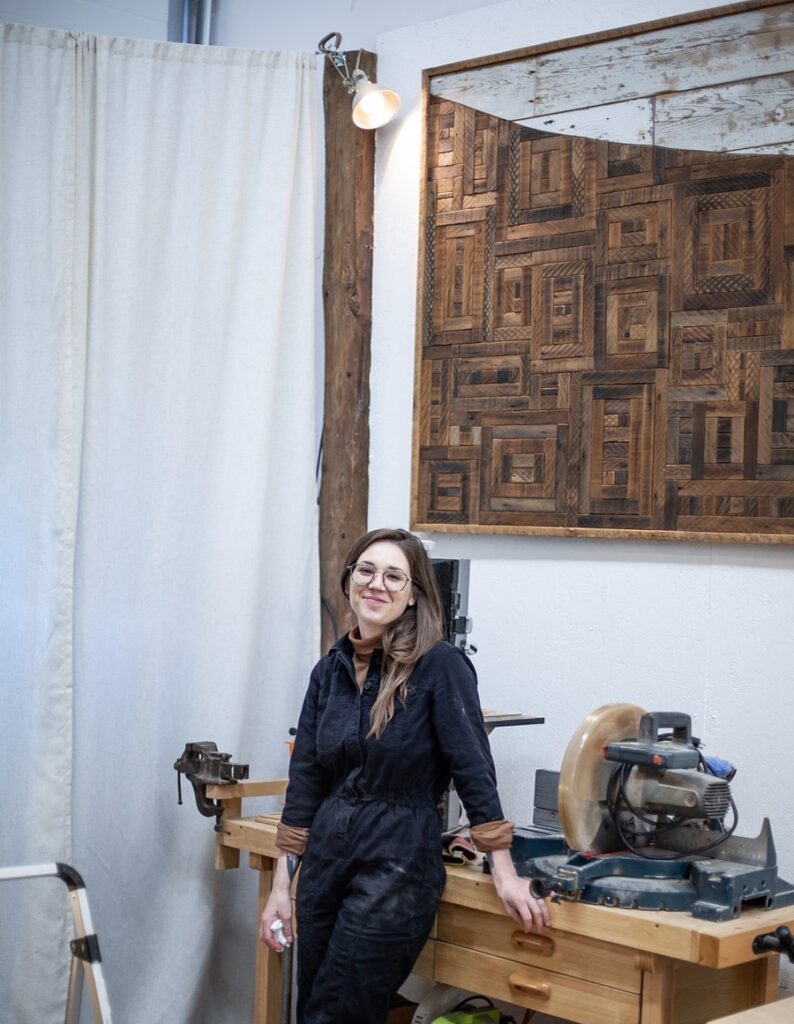
These pieces are beautiful enough to hang on the wall, their forms suggesting Henry Moore sculptures and patterns found in Islamic or African art. At the same time, they look like they could be designed to hold nuts, olives, or an array of cheeses.
Dress welcomes the idea that her work occupies this ambiguous territory between fine art and functionality. “The pieces are always meant to be sculptural but functional,” she says. “I love that marriage.”
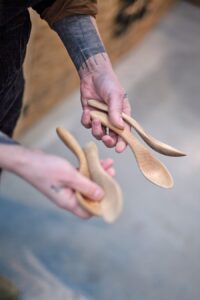
She pulls a handful of wooden spoons from a shelf— prototypes made when chef James Hackney asked her to create just the right utensil for a chowder course he was creating at Twenty-Eight Atlantic, the Wequassett Resort’s restaurant.
“He wanted to have a wooden spoon that recalled the idea of a primitive tool,” says Dress. For something that sounds simple, there was a lot to consider. There were practical matters: it would have to work well for both right- and left-handed people, match the scale of the other tableware, and be large enough to hold a whole clam. Then, there were the aesthetics: “We wanted the spoon to be able to rest on the table and be a sculpture that is beautiful and holds space,” she says.
Displayed on her workbench, the final version is both sensuous and understated, with gentle curves and a natural wood finish.
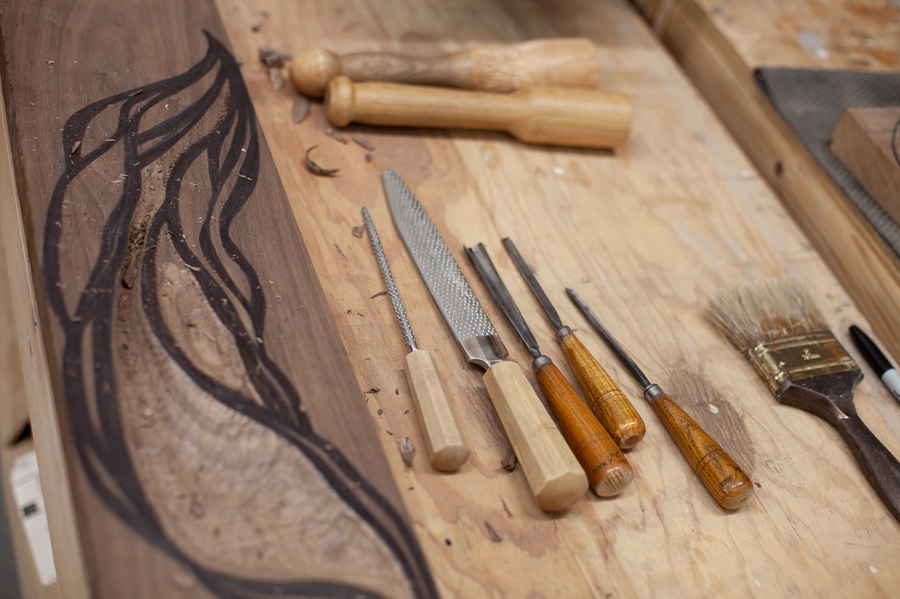
Dress considers herself equal parts designer, woodworker, and artist. She moves easily between large commissions and small desktop projects. One piece hanging in her studio is representative of her large-scale work: a rectangular abstract composition, almost like a quilt constructed from wood. For this piece, she used laths — flat strips of wood used as a foundation for plaster walls — that she sourced from a house in Boston that was built in the 1800s.
“I wanted to highlight the variation of the markings and color,” she says. Arranged in concentric squares, the imperfect wood tells a story of the material’s use and its survival after a fire, evidenced by black markings from soot. For most of her pieces, Dress uses found wood or offcuts that she gets from carpenters.
Dress has also worked on large-scale projects for the Great Awakening Coffee House in Hyannis, where she created a 26-foot-long wooden counter of rhythmic waves, and at Viv’s Kitchen in Orleans, where she constructed a planter wall with recessed boxes. “I love playing with different scales,” she says.
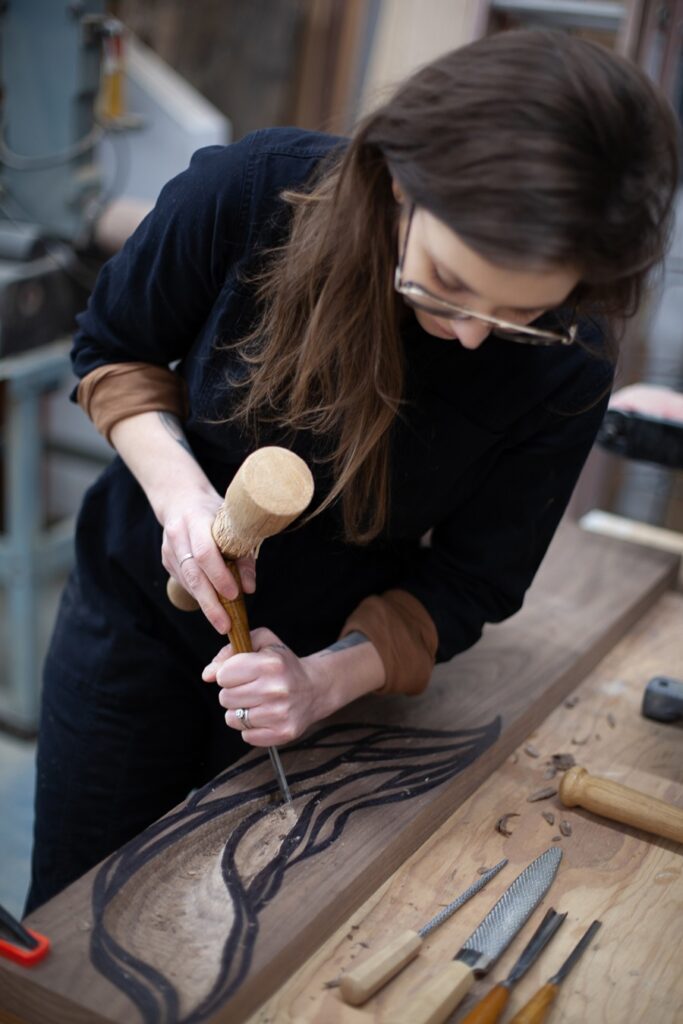
Making smaller carved works can be tedious, she says: “If I just worked on the intricate carving pieces I’d lose my mind, and my hands.”
Dress typically begins working out compositions and designs in her sketchbook. Next, she draws on a piece of wood and then begins carving out the design with a set of vintage hand tools. “I’m a stickler about always using hand tools,” she says. “The beauty of woodworking is that it’s a slow process. I like having a connection to the material and taking my time to get to know a piece of wood and its nuance.”
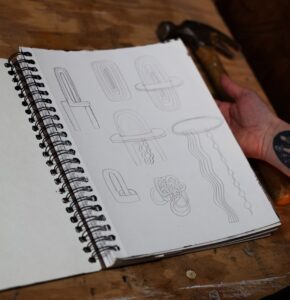
In one way, the objects look timeless, as if they were natural forms shaped by erosion. Yet they also seem to convey a sense of devotion, as if they were caressed into shape. “I’ll sand an individual piece to a point where you can’t see any scratch marks from my work,” says Dress. “I like it to look effortless — as if the object has always been there.”
Her sanding gloves bear witness to her efforts. Currently, she’s down to two left-hand gloves with both thumbs worn out from sanding, a process that begins with 60 grit sandpaper and can end at a super fine 600 grit.
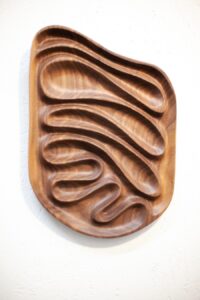
The final step involves coating her objects with a food-friendly wax and oil finish. “It’s such a rich color,” she says as she spreads the finish over a recent walnut carving. The process also reveals lighter passages in the piece. “I love catching the sapwood,” she says of these passages.
Dress, who grew up in Chatham and currently lives in Harwich Port, was exposed to art at an early age. “The whole house was a painting studio and a sculpture studio,” she says. Her father, Craig Phillips, is a carpenter and would often take her along to job sites.
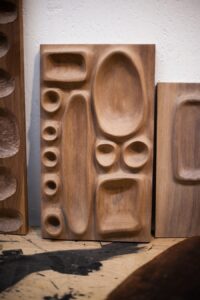
In 2013, she collaborated with her father to create a bar from driftwood for her wedding reception. “People were asking if they could buy it,” she recalls. Afterwards, she continued working with driftwood and then reclaimed wood and cutoff scraps. She established a workshop and gallery in Dennis Port, where she sold her pieces for six years before closing during the pandemic.
Now Dress shares a workshop in Truro’s Tradesmen’s Park. “I’m very happy to be here,” she says. In it, stacks of carefully collected planks await their reinvention. What she does with them will be a matter of what each one looks like and feels like.
“Wood is visually beautiful,” she says, “but you also want to touch it.” What she loves is that “it can occupy so many different forms.”
Truro’s Tradesmen’s Park Archives – The Provincetown Independent #Truros #Tradesmens #Park #Archives #Provincetown #Independent
Source Link: https://provincetownindependent.org/tag/truros-tradesmens-park/
Truro’s Tradesmen’s Park Archives – The Provincetown Independent:
On a tabletop in Sophia Dress’s Truro studio are about a half dozen wooden objects carved from walnu…
